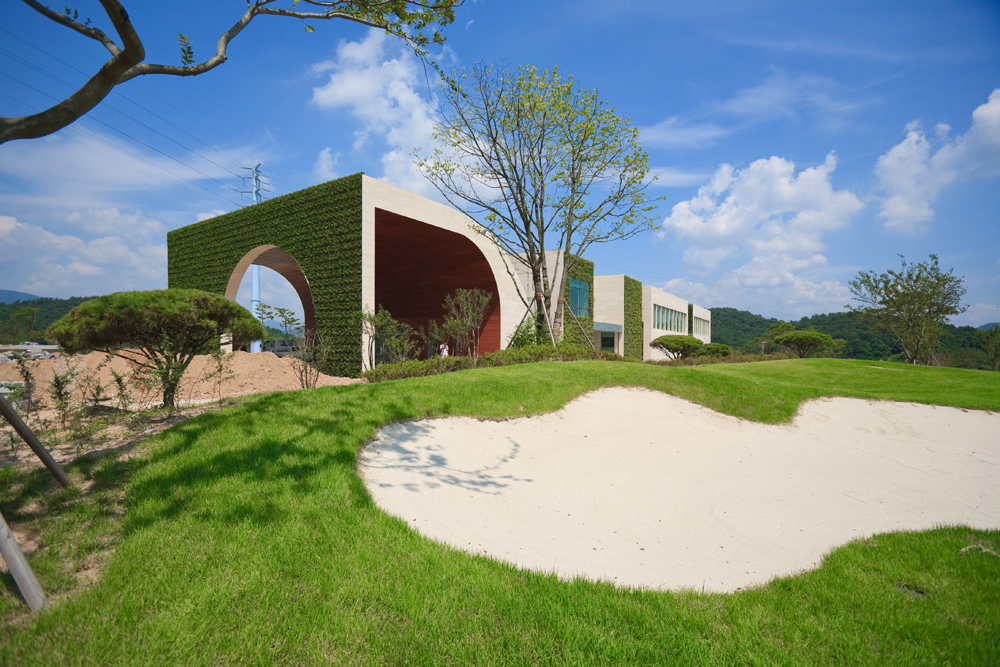In an era where environmental consciousness is paramount, sustainable and eco-friendly clubhouses are emerging as pioneers in redefining community spaces. Beyond serving as recreational hubs, these clubhouses prioritise ecological responsibility, integrating innovative green practices that not only reduce environmental impact but also inspire a sense of eco-awareness among their members.
Green Building Design
In addition, sustainable clubhouses start with conscientious building design. Architects and builders focus on eco-friendly materials, energy-efficient systems, and designs that optimize natural lighting and ventilation. Green roofs, solar panels, and rainwater harvesting systems are common features that contribute to the overall sustainability of the clubhouse infrastructure.

Renewable Energy Integration
To minimize their carbon footprint, eco-friendly clubhouses harness the power of renewable energy sources. Solar panels, wind turbines, and other renewable energy technologies are integrated to generate electricity, reducing dependence on conventional power sources. This not only lowers operational costs but also sets an example for sustainable energy practices.
Waste Reduction and Recycling Initiatives
Additionally, sustainable clubhouses adopt comprehensive waste reduction and recycling programs. From composting organic waste to recycling paper, glass, and plastic, these initiatives aim to divert waste from landfills. Implementing strict waste management practices fosters a culture of responsibility among clubhouse members, encouraging them to participate actively in reducing waste.
Eco-conscious Landscaping
In addition, the green ethos of sustainable clubhouses extends to their outdoor spaces. Landscaping practices prioritise native plants, water conservation, and biodiversity. Rain gardens, permeable surfaces, and smart irrigation systems are employed to create lush, eco-conscious landscapes that enhance the overall sustainability of the clubhouse environment.
Water Conservation Measures
Eco-friendly clubhouses emphasise responsible water management. Low-flow fixtures, water-efficient landscaping, and innovative water recycling systems are implemented to minimize water consumption. Therefore, these measures not only contribute to environmental conservation but also lead to substantial cost savings in water bills for the clubhouse.
Sustainable Events and Activities
Clubhouses dedicated to sustainability often host events and activities that promote environmental awareness. Workshops on eco-friendly practices, tree-planting initiatives, and educational sessions on conservation become integral parts of the clubhouse’s calendar. These endeavors not only engage members but also foster a sense of community responsibility towards the environment.
Collaboration with Local Eco-Initiatives
Sustainable clubhouses actively engage with local eco-initiatives and environmental organizations. Partnerships with tree-planting campaigns, beach cleanups, and other community-driven projects strengthen the clubhouse’s commitment to broader environmental causes. Such collaborations amplify the impact of sustainability efforts beyond the clubhouse premises.
Education and Advocacy Programs
Furthermore, to empower members with knowledge, sustainable clubhouses initiate education and advocacy programs. Workshops, seminars, and informative sessions on sustainability, climate change, and environmental protection create a community that is not only environmentally conscious but also actively involved in promoting green practices beyond the clubhouse setting.
Certification and Recognition
Moreover, many sustainable clubhouses seek certification from recognized green building authorities. Achieving certifications like LEED (Leadership in Energy and Environmental Design) signifies a commitment to high environmental standards. Recognition of such certifications not only boosts the clubhouse’s eco-credentials but also sets an inspiring example for other community spaces.
Conclusion
In the ever-evolving landscape of community spaces, sustainable and eco-friendly clubhouses are carving a path toward a greener, more environmentally conscious future. By integrating green building practices, renewable energy sources, waste reduction initiatives, and community engagement programs, these clubhouses prove that recreational spaces can play a pivotal role in fostering environmental stewardship. As more communities embrace these sustainable models, the ripple effect expands, creating a harmonious synergy between human recreation and ecological preservation.











